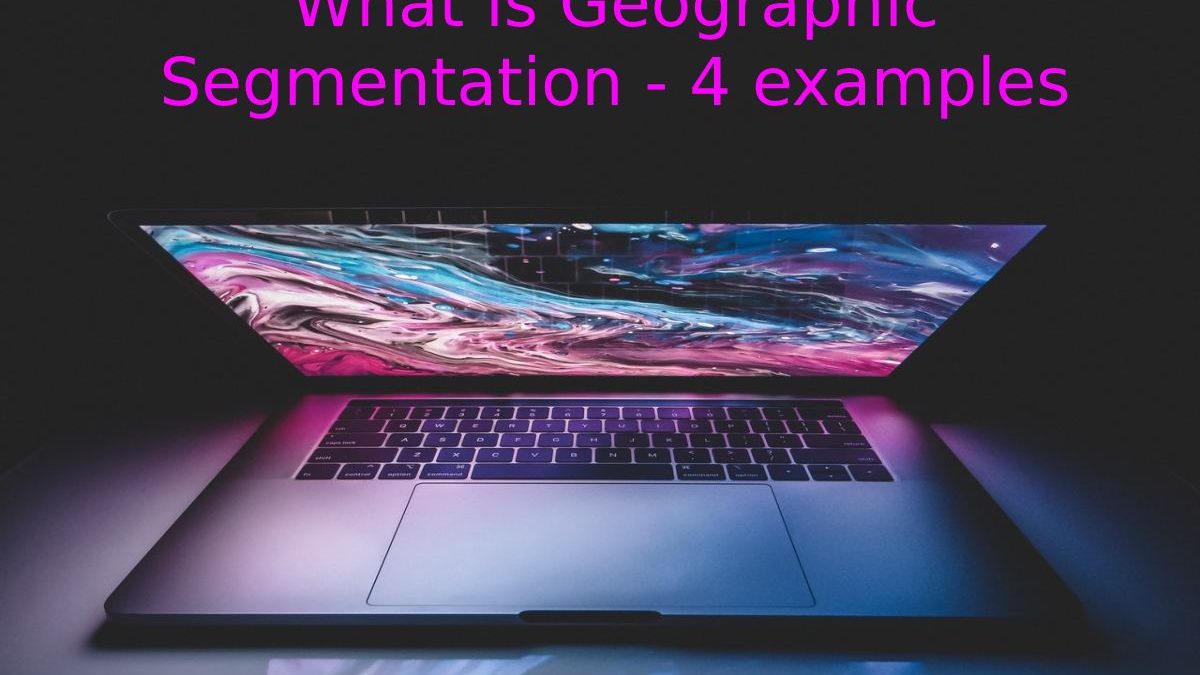Table of Contents
Geographical Segmentation
Geographic Segmentation: Even though clients share vital traits, everyone has unique attributes that might help you design a better-customized marketing strategy. Geographic segmentation is an example of this since it allows you to place your product or service based on where some of your clients are.
If your marketing messages are directed to where your users are, it is possible to obtain more significant benefits. Learn about the importance of geographic segmentation, see some examples and learn how to implement it to increase your sales and produce your business.
What is geographic segmentation?
Geographic segmentation is a market division according to the place or area where users are located, such as region, country, state, and city. It helps to know the ideal location and times for distributing promotional content.
However, it considers variables such as market size, climate, and socioeconomic level, among other data. It is one of the most important sources of information to carry out a marketing campaign since it is possible to design more personalized strategies.
When to use Geographic Segmentation?
How a person acquires the product or service usually depends on the area they are located. For this reason, geographical segmentation allows a very effective visualization of customer preferences (to design the perfect message for each one).
This type of geographical segmentation is helpful for companies in which each area influences and registers a different behaviour of its consumers. For example, it would be essential for a coffee shop to know if one of its locations should promote more cold drinks than hot ones according to the region’s climate.
Four examples of Geographical Segmentation
- Local targeting
- Weather targeting
- International segmentation
- State targeting
1. Local segmentation
The local target is a type of geographic targeting that allows users near your physical locations to make a purchase directly from your stores or sites. 78 % of local searches on a smartphone result in offline purchases.
Think about it: how numerous times have you searched for a specific store near you? More than once, the search engines are set up to show you a series of options close to you, where you might find what you need.
If your business is segmented locally, it is easier for your users to find you. For example, if a person in Mexico City searches for “Chinese food near me”, these would be the options:
The options will change depending on where you are. Still, suppose you use the local information of your clients to your advantage and have what it takes to be optimized and be one of the first options in the searches of your clients. In that case, you are on the other side! ! This is a great advantage of local geographic segmentation since it makes it easier for your customers to find you, know your location quickly and go directly to your physical establishment to purchase the product or service they require.
2. Weather Targeting
You can carry out a geographic segmentation according to the climate of a particular region where your brand is present. According to the example of the coffee shop that we mentioned before, let’s imagine that it has a presence in the United States of America and can determine its advertising in the following way:
More excellent promotion of its cold drinks in coastal states such as California and Florida, where the temperature can exceed 30° Celsius; and tremendous rise of its hot beverages in states such as New York, Chicago, or Montana, where the weather is regularly colder.
This type of segmentation also allows brands to increase or reduce the number or variety of certain products according to the number of sales they register by climate zone.
3. International Segmentation
Suppose your presence in the market is pervasive and you have clients in different countries. In that case, international geographic segmentation is more than necessary. Especially if your products or services cannot be the same for all your consumers.
There are supermarket chains in different countries that offer quite a few of the same products. However, there will always be significant differences between the items provided in each. Some goods are not produced locally, or others may not sold the same. For example, if a company sells tortillas, it will surely well receive in Mexico since 98.6% of Mexicans consume them. Still, if they were sold in a branch in Argentina, they would probably not be very successful.
Global geographic segmentation allows you to meet the country’s specific requirements where you have a presence. Thus, you respond to the lifestyle of your customers. And do not risk putting on sale products that are not necessary or not insufficient demand.
4. State Targeting
Due to their diversity, some countries are a real challenge for companies to divide markets. Mexico is one of them since it has an extensive territory and its states have very peculiar qualities among themselves. For example, there is a lot of wealth in gastronomic matters. So the companies that manufacture food must offer different styles to satisfy each consumer’s demand.
A natural, undeniable example is that of Tía Rosa’s flour tortillas. This brand, very famous and old in Mexico, has increased its product ranges. And just as there products found throughout the country, others only available in certain states.
For example, it is easy to find classic flour tortillas throughout the national territory. Still, flour tortillas for northern grills sold. And consume precisely in the north of Mexico, where it wider to prepare burritos or grill meats.
Therefore, segmentation by the state becomes essential to confirm. Which is the optimal product for the customs and preferences of your customers and thus maximize your sales.
Also Read: Determining the Value of Bitcoin: 5 Factors to Consider


